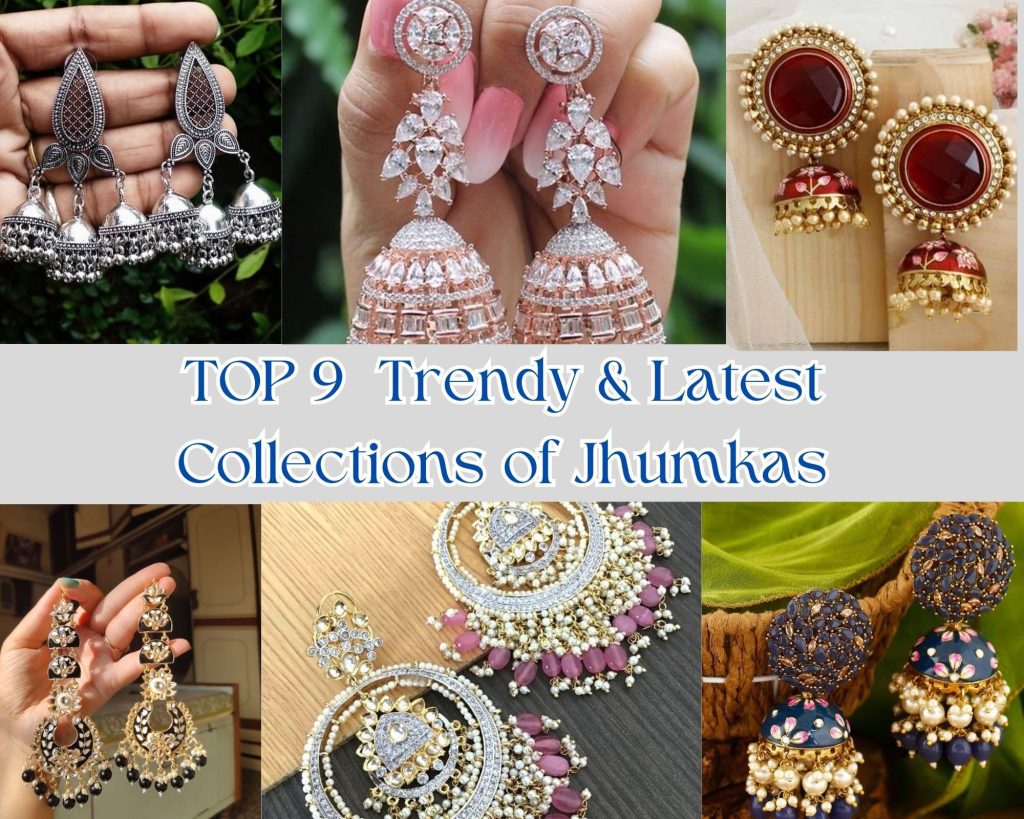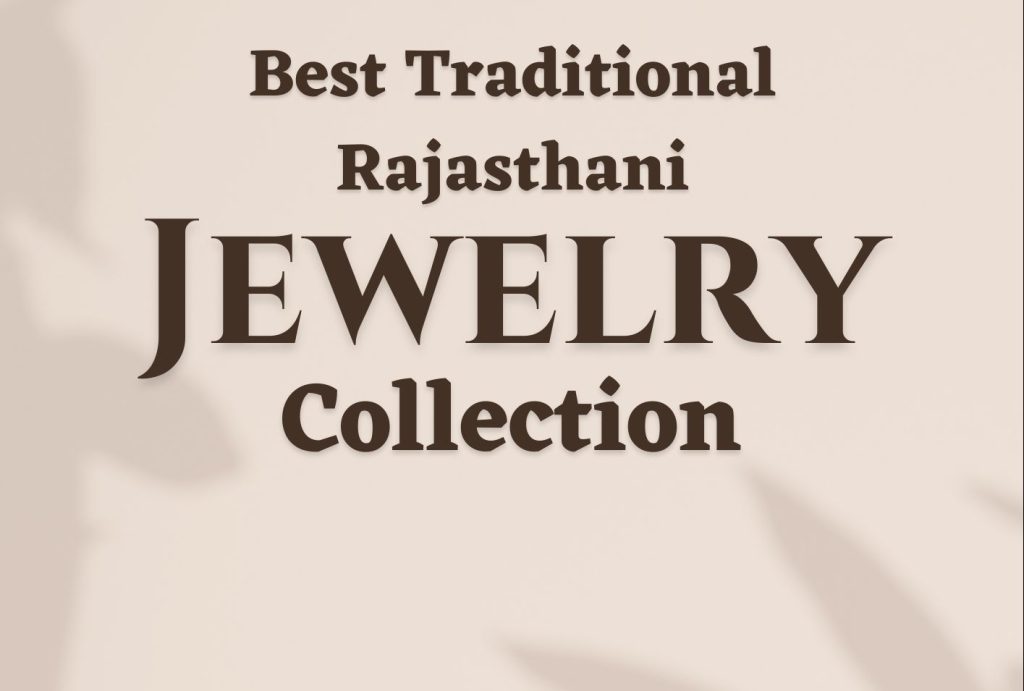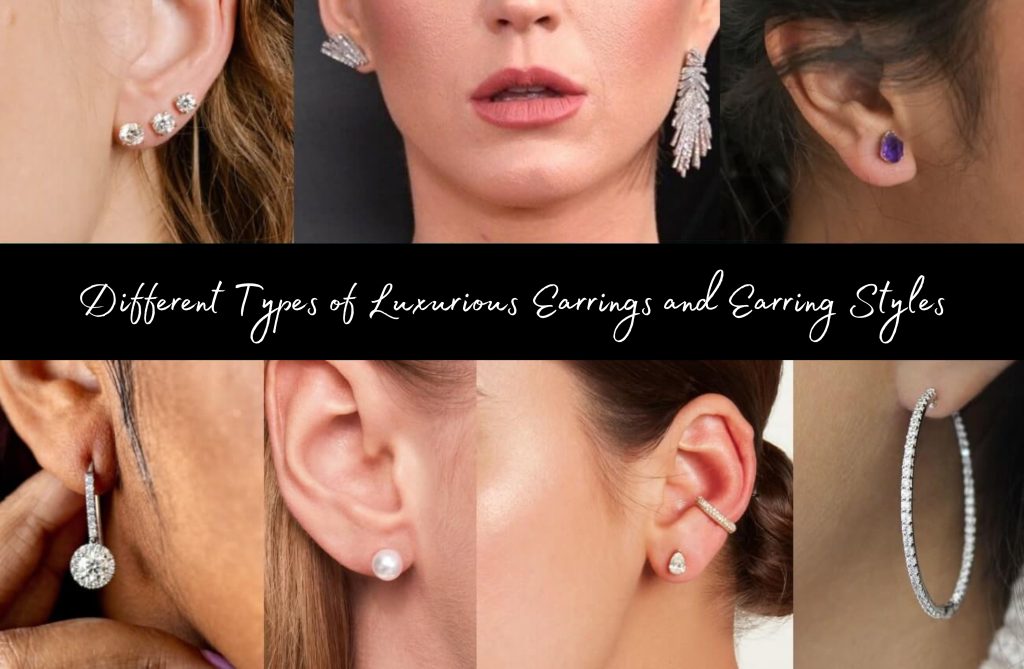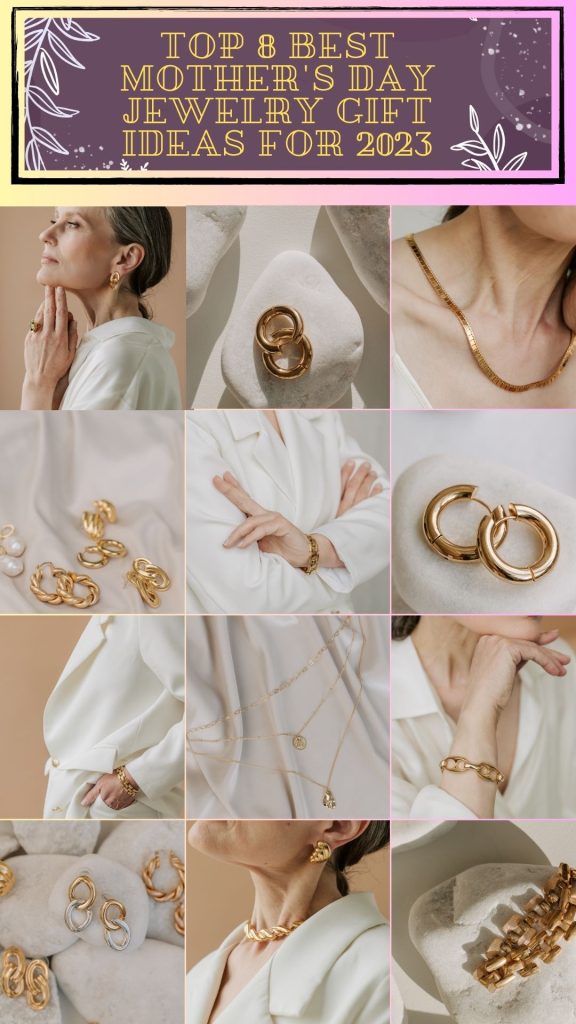Earrings are an indispensable component of every woman’s wardrobe. These are the most cherished and appreciated decorations by the lady who wears them. Whether you’re going for a more western or traditional appearance, a set of earrings that go with it is an absolute need.
Earrings may be found in a wide variety of forms and dimensions. Jhumkas are said to have one of the oldest and most traditional designs for earring patterns.
Jhumkas are distinctive bell-shaped earrings worn for generations and may be traced back to ancient times.
Jhumkas are sure to find a place in the vanity box of every female who is an earring enthusiast due to the fact that they are the epitome of perfect elegance and immaculate beauty. They may bring that extra grit and grace to your ensembles, and they will never go out of style.
Jhumkas may be found in various styles and designs on the market nowadays. As a result, selecting the appropriate Jhumkas is challenging. Before making the purchase, it is essential to have an understanding of the many different types of jhumkas that are available.
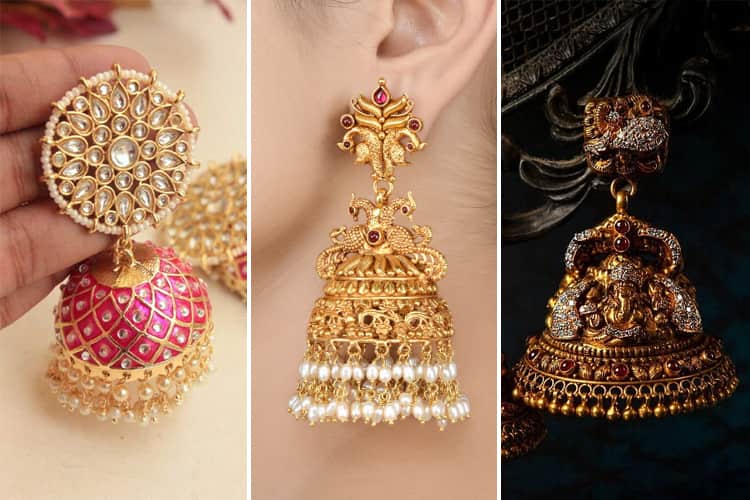

The following is a list of the nine different styles of Jhumka that you should be familiar with before making a purchase:
Latest Collections of Jhumkas
1. Diamond Jhumkas
Who doesn’tdoesn’t enjoy the sparkle of a diamond? The answer to this question is always affirmative because diamond jhumkas look good with every type of Indian attire.
Diamonds are the reason for the extremely high cost of these items. Nonetheless, they immediately impart an air of appeal and attractiveness to your appearance.
Compared to the weight of other jhumkas, these are incredibly lightweight and convenient to carry. You may achieve an unmatched level of glitz and sophistication by wearing them with your traditional garb, suits, or designer outfits.
2. Classic Jumkas in a Golden Finish
These jhumkas have a gold plating over them and often come in a conical form.
These Jhumkas have been fashioned and embellished with various valuable stones like rubies, sapphires, opals, and pearls, which contribute to their opulent and alluring appearance.
As a result of this, they have a somewhat high weight, but the trade-off is justified. Golden jhumkas are essential for every female to have at least two or three pairs. They are for the celebrations surrounding the wedding and other customary and joyous events.
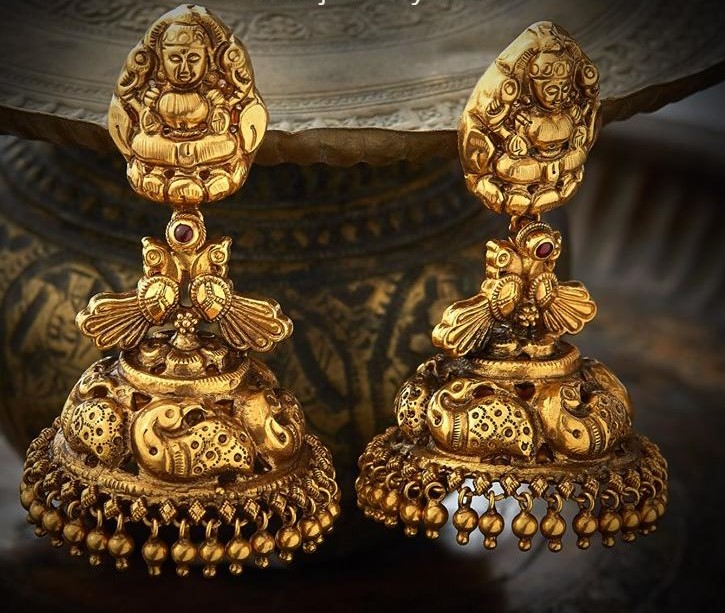

3. Hoops Jhumkas
Hoops and jumkas are excellent accessory choices to complement sarees and outfits alike. The combination of jhumkas and hoops is the perfect synthesis of two earring types.
This hoop is accessorized with jhumkas, and we can see the latest design for jhumkas. Hoops Jhumkis are convenient because they are lightweight and straightforward to wear and carry.
It enhances the natural attractiveness of the face and may be colour-coordinated with the wearer’swearer’s wardrobe. You have various styles, colours, and sizes to select from according to your preferences and sense of fashion.
4. Silver Oxide Jhumkas
When compared to traditional silver jhumkas, which are not manufactured with an oxidized form of silver, these Jhumkas are made with an oxidized form of silver.
The blackish effect that the hue has gives these Jhumkas a very distinctive appearance. This is one of the reasons why they are so popular.
Because of the blackish tone, they are versatile enough to be worn daily with various outfits. On the other hand, the size of the Jhumkas should be chosen carefully in accordance with the occasion and the garment being worn.
5. Pearl Jhumkas
Several types of pearls are used to decorate the body of the jhumkas, so the earrings can be whatever size, colour, or form you choose.
They are a perfect example of grace and elegance in their own right. Your traditional outfit, whether you’re wearing it to wedding festivities, religious ceremonies, or evening parties, will be given a boost of effortless panache thanks to the addition of these.
6. Meenakari Jhumkas
Meenakari is a type of Iranian art that decorates the surface of metals by fusing together various colours that contrast with one another. They are initially from the Indian state of Rajasthan.
The Meenakari art form is used in Meenakari Jhumkas, resulting in the Jhumkas’ vibrant and colourful appearance. Latkans constructing these Jhumkas are typically given a rich hue throughout manufacturing.
When paired with traditional outfits for special occasions like weddings, celebrations, and Jhumkas, you will seem much more abundant and put together than you already were.
7. Ear Cuffs Jhumkas
Ear cuffs Jhumkas are a mix of ear cuffs and Jhumkas, commonly available in various styles and shapes. Jhumkas have been increasingly popular in recent years.
The upper section of these Jhumkas is linked to the bottom portion, which continues to dangle loosely. This higher piece is then wrapped over the outer cartilage of the ear.
The pattern fashioned like a peacock is by far the most sought-after and popular option out of all the available options.
Ear cuffs with intricate designs may be worn to formal events like weddings and celebrations, but more understated versions look great with everyday outfits like salwar kameez and salwar suits.
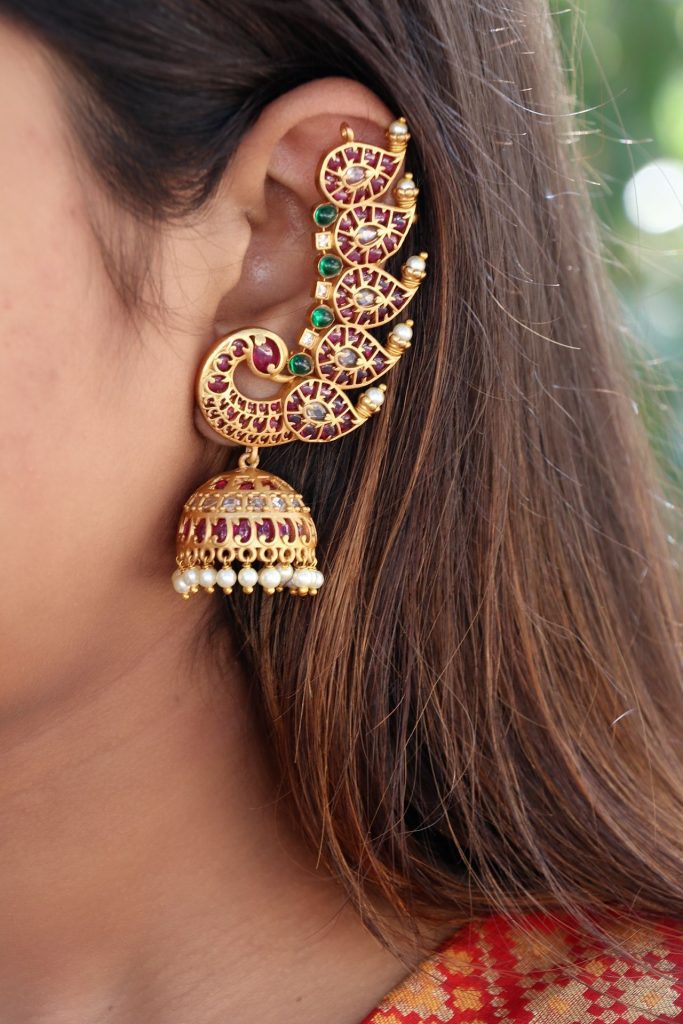

8. Kashmiri Jhumkas
Jhumkas come in various designs, but the Kashmiri style is the most attractive and hard to resist. These Jhumkas come with lengthy chains meant to be worn in the auricle region behind the ear.
They also can be fastened exquisitely with our hair. The body of these Jhumkas is adorned with valuable stones and pearls, helping you to distinguish yourself from the other people in the room.
If you attend a wedding or party dressed in traditional garb and wear these accessories, you will be the centre of attention no matter where you go.
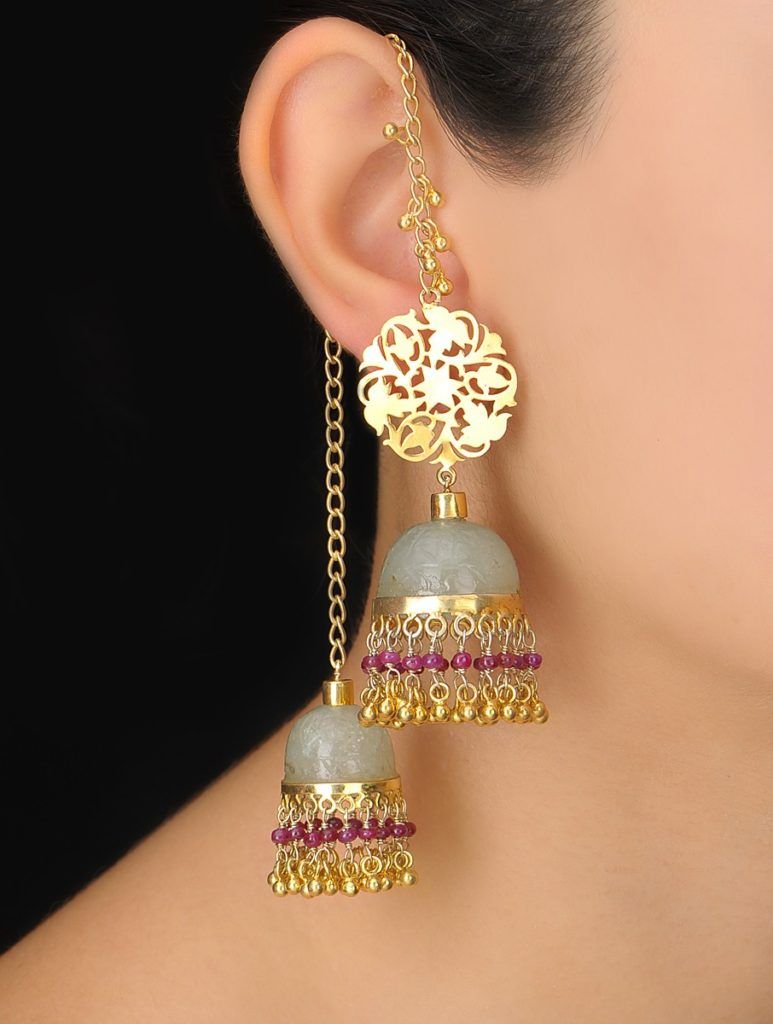

9. Terracotta Jhumkas
Terracotta Jhumkas are made by hand, but they are made of baked earth instead of precious metal. They have a low weight, are simple to transport, and are gentle on the skin. They can be found in a variety of forms and patterns.
Sometimes the designs on them even take cues from the natural world, such as flowers or animals. They look great paired with trendy clothing and more straightforward traditional garb. But we only suggest them for events with a few people.



